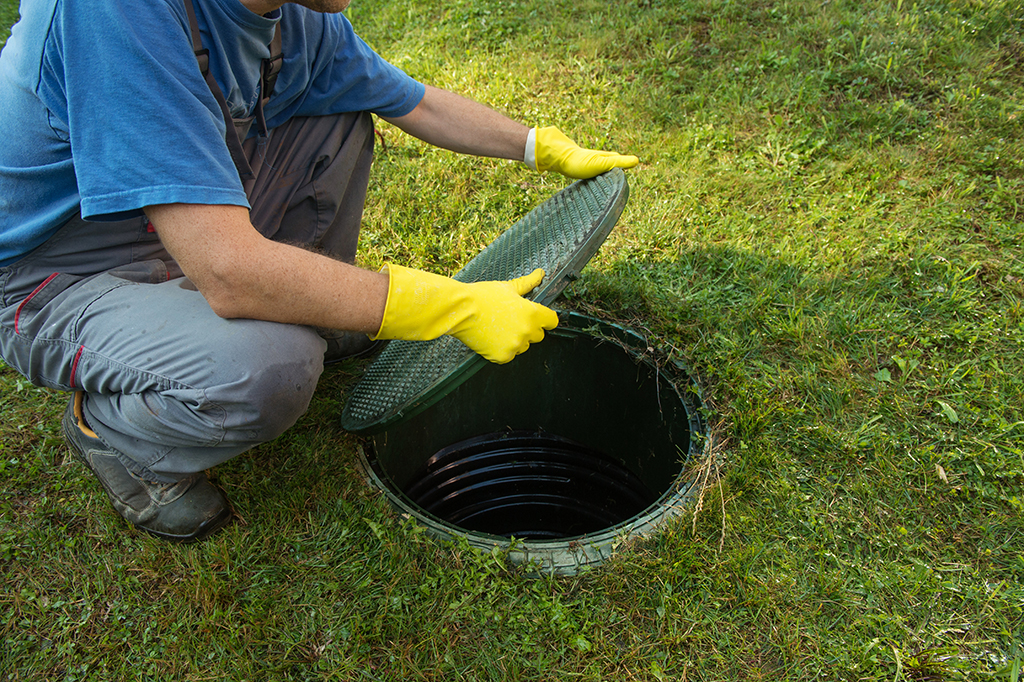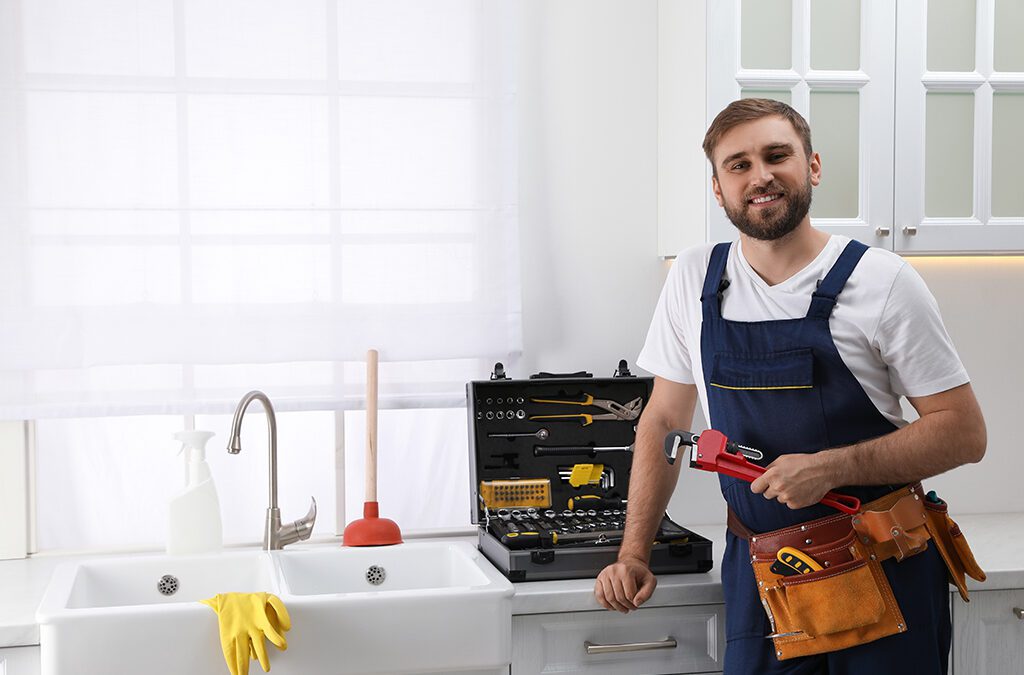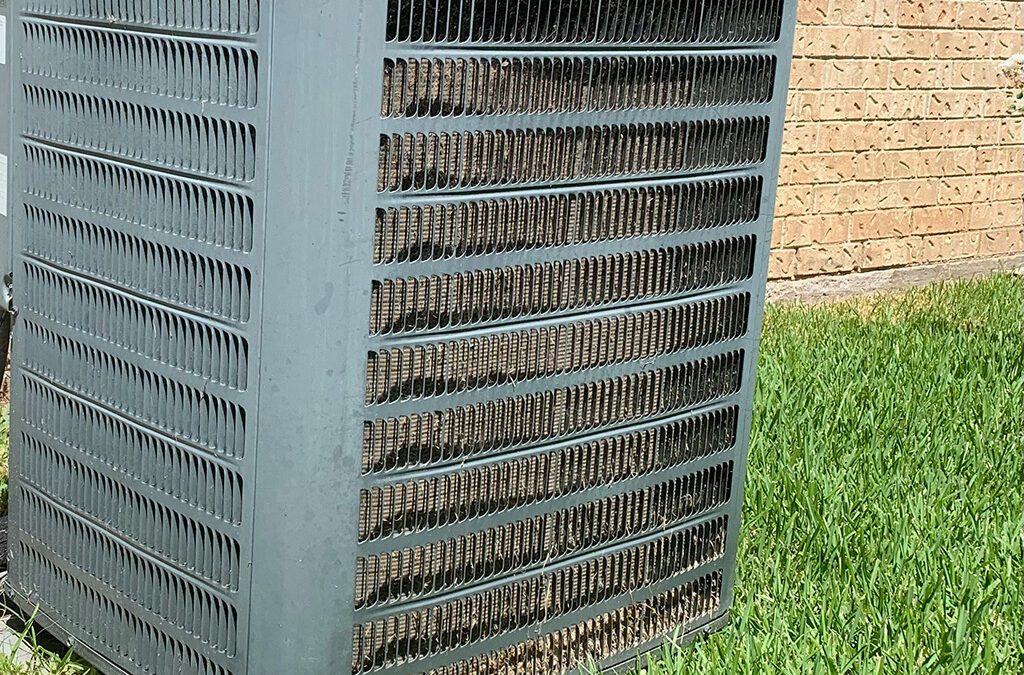Photo By KaliAntye at Shutterstock
Septic tanks are wonderful waste removal systems but like all plumbing systems, they are subjected to regular maintenance. A septic tank should be pumped every 3 to 5 years. A septic tank pumping is not as complicated as it seems. You should always hire a professional to pump your septic tank so that it is done correctly and you don’t have to worry about disposing of the waste. Metro Plumbing, Heating, and Air in Chattanooga, TN know that septic tank pumping can be a daunting task and some homeowners have no idea what process is involved with pumping a septic tank. They would like to share the process and reiterate how important it is to hire a professional.
Let’s first look at how a septic tank works
A septic tank is like a sewage processing plant on its own. A septic tank is a large underground container that can be made from different materials such as concrete, plastic, fiberglass, or steel. There are various different types and sizes that you can choose from to suit your home’s needs. All the sewage from your home flows into one pipe which flows into your septic tank. The sewage stays in the tank for a while and then after some time, the sewage starts to separate. The solid waste sinks to the bottom of the tank and this is usually called the sludge. The tank is full of microorganisms that decompose the solid waste. The oil and grease will float to the top which is called the scum. In between the solid waste and the scum is the effluent. The effluent drains from the septic tank into the drainage field. There are compartments within the system that stop the solid waste and the oil to make its way into the drainage field. The drainage field is a covered spot where excavation has been done. The effluent will flow into the drainage field and it will filter through the soil. Any harmful impurities will be trapped in the soil and the water that has been filtered can be used by the plant’s root systems. Unfortunately, the microorganisms within the septic tank can’t decompose the solid waste fast enough and to avoid the solid waste from entering the drainage field, the septic tank must be pumped. The size of your septic tank will determine how often your septic tank needs to be pumped. If you use a garbage disposal often then this can also increase the frequency of when your septic tank should be pumped. The optic tank pumping can only be carried out by licensed professionals that have the correct equipment and knowledge. It is important to know what the process of having a septic tank pumped is like so that you can provide assistance to the technician if they need any. This will also help you to ask fewer questions and all the technicians to carry out their tasks without interruptions. There are five main steps in the process of pumping a septic tank but these steps can be broken down into smaller and more detailed steps if the situation requires it.
First step: Inspection of the tank
The first step to conduct septic tank pumping is to inspect the septic tank and determine if pumping is absolutely necessary. If the solid waste at the bottom is close to blocking the pipe that leads to the drainage field then it is definitely time for a septic tank pumping. The inspection will also give the technician an indication if there are any damages that might cause problems during the pumping process like leaks or blocked drains that might push the waste into the incorrect direction while the technician is breaking up the solid waste. If the levels within the septic tank are low even with frequent use then this can indicate a leak within the septic tank. Leaks can occur in both steel and concrete septic tanks and it is important to have your tank inspected for leaks because waste might leak out of the tank or water can make its way into the tank and cause it to flood the tank. If the liquid levels are high before the pumping or the system has a history of high levels of liquid then that can indicate that there are backups from the drain field. .Another problem that the technician might see during the initial inspection is that the system might be too small to handle the waste that is generated by the household. This should be discussed with the homeowner after the pumping. It could be much cheaper to install a larger tank than have frequent septic tank pumping that can be costly and inconvenient.
Second step: Septic tank pumping
After the tank has been inspected and the technician has determined that it is time for the septic tank to be pumped. The process of pumping a septic tank should always be left to the professionals like Metro Plumbing, Heating, and Air in Chattanooga, TN. They have the required tools and equipment to conduct the septic tank pumping successfully. They also have access to a septic tank pump that can store the waste until it is disposed of in a safe and legal manner. The technician can use a muckrake to stir the solid waste and break up clumps of solid waste that might block the vacuum pipe that is removing all the waste. This tool is also useful for breaking up the scum layer that floats on the top. The operator can use the muckrake throughout the pumping process. Once the vacuum lines are connected and the pump in the pumper truck is activated as well as the muckrake has been inserted into the septic tank then the removal of waste can begin. It is important for the technician to move the muck rake and vacuum line to break up and mix the sludge and scum with the effluent in the tank. This makes it easier to pump out everything that is in the septic tank. The technician will conduct inspections throughout the whole process of the septic tank pumping to see if there are any hidden problems. The technician might turn off the pump in the truck to listen if there is any effluent spilling back into the tank from the outlet line. This could inform the technician that the drain field is saturated. This information is hard to obtain through other means. If you have a plastic or fiberglass septic tank then you should inform the plumber in case the plug gets dislodged during the pumping. The septic tank pumping will not be successful without the plug because the waste will seep into the surrounding ground. After all the waste has been removed the technician can inspect the tank.
Third step: Final inspection
The septic tank will mostly not be emptied 100%. It is beneficial to leave a few inches of sludge in the septic tank so it is easier for the system to start back up again after the pump. In some cases like holding tanks and cesspools a complete pumping is required. The technician should carry out a full inspection of the bank especially if there are any signs of effluent on the property and around the septic tank. The technician should also look out for a backflow of liquid when the septic tank has been pumped. This might indicate that the drain field is no longer functional. There might be some groundwater that flows into the tank while it is being pumped. A note should be made of all these problems and the technician should inspect everything thoroughly to find the cause of these problems. After the septic tank pumping has been conducted the technician should advise the homeowner of some concerns and the solutions. This is also why it is so important for a professional to conduct the septic tank pumping because they know how to assess the septic tank and determine the causes of the problems as well as carry out the necessary repairs to restore your septic tank to its original working condition.
Fourth Step: Clean up and disposal
Once the technician has made a note of the damages then the manhole should be replaced and sealed carefully. The septic tank emits gases and if these gases escape then it can cause health problems. It is also possible for some of the waste to spill. This spillage should be cleaned up after the tank has been pumped with some disinfectant to avoid any health hazards. In the worst-case scenario where the major spillage has occurred is it important to inform the municipal office for health and sanitation so they can advise you which steps to follow to minimize the effect that the spillage has on your environment and home. The best part about hiring a licensed professional like Metro Plumbing, Heating, and Air in Chattanooga, TN to carry out septic tank pumping services, is that you do not have to worry about how to dispose of the waste. The professionals that you hire will dispose of the waste in a legal manner that is not detrimental to the environment. The plumbing company will arrange to store the waste at a public septage receiving facility which will process the waste.
Fifth step: Advising homeowners
The final step in the process of septic tank pumping is to advise the homeowners of the condition in which the septic tank is. They might say that everything is in order and that the septic tank does not require any additional repairs which is fantastic news. Other times you might not be so lucky and comments within your septic tank need to be repaired or replaced. You should do a lot of research before choosing a septic tank service provider because they need to be able to conduct the septic tank pumping as well as any repairs required after the tank has been emptied. It is also important to get technicians that you trust and who will provide accurate information and solutions that will resolve the problem without costing you an arm and a leg. some of the less reputable companies will lie and advise you of components that need to be repaired but they are actually in perfect working condition. It is best to find a trustworthy and reliable company because they will be able to monitor how often you need to have your septic tank pumped. If the number is higher than the average then they can advise you to install a larger septic tank because the current one is unable to deal with the demands of the household. The septic tank pumping might not be a time-consuming task but the repairs might take a while. It is important to hire a professional that will stick to deadlines. It is very difficult to live comfortably without your septic tank for a while.
The process of a septic tank pumping is not as complicated as it seems but is always advised to leave it up to trained professionals. Things can go wrong during a septic tank pumping which will require someone with the expertise to handle the situation. The capable and reliable plumbers at Metro Plumbing, Heating, and Air in Chattanooga, TN have years of experience with septic tank pumping and will ensure that the pumping process is conducted correctly. If any new problems are observed then they will inform you what the best solution possible is. They provide a wide range of septic tank related services so you don’t have to shop around.
Call us at Metro Plumbing, Heating & Air today if you suspect that your septic tank is not 100% functional and let them help you get rid of your waste.




